Fisheries Cross Country '13
#61
 Guest_smilingfrog_*
Guest_smilingfrog_*
Posted 02 November 2014 - 12:34 AM
I think your devil's club picture however, is actually cow parsnip "Heracleum lanatum". I believe contact with it can cause photodermatitis so it's one to avoid as well.
#64
 Guest_NateTessler13_*
Guest_NateTessler13_*
Posted 02 November 2014 - 05:59 PM
Very envious, wish I could see that much of our country from a fish/fishing perspective. Great pictures and narrative. I just finished reading this whole thread in one sitting.
I think your devil's club picture however, is actually cow parsnip "Heracleum lanatum". I believe contact with it can cause photodermatitis so it's one to avoid as well.
I'm glad you've enjoyed the narrative up to this point. You're correct about the cow parsnip. Thank you for pointing that out! I found an interesting resource that illustrates the differences between devil's club and cow parsnip: http://whatdoino-ste...-heracleum.html
Those coastal trout are really cool. Great job with the photos!
Thanks, Ben. They are a beautiful fish.
I agree on the cow parsnip which is closely related the new invasive giant hogweed. Both can cause photodermatitis but the giant hogweed is much more severe.
Very cool Nate.
Yeah, I have seen some info about the invasive giant hogweed showing up in Ohio.
#65
 Guest_NateTessler13_*
Guest_NateTessler13_*
Posted 02 November 2014 - 08:00 PM
At the end of June, I was asked to travel to northwestern Indiana to help train a field crew in the sampling methods used in the National Rivers and Streams Assessment. I met the crew near the town of Wheatfield in Jasper County (about 1.5 hours southeast of downtown Chicago). This portion of Indiana was once part of the Great Kankakee Swamp, one of the largest wetlands in the United States. Wetlands and swamp habitat surrounded the Kankakee River (which flowed through the Great Kankakee Swamp) prior to the mid-19th century. Beginning around that time, the swamp was drained and the land was converted into agricultural use. Many of the streams in this area have been channelized or straightened to allow water to drain quickly from the land. As the landscape changed, many of the native fishes adapted to live in marsh habitat either disappeared or experienced declines in populations. The species that remain now live in modified drainage ditches, such as Hodge Ditch:
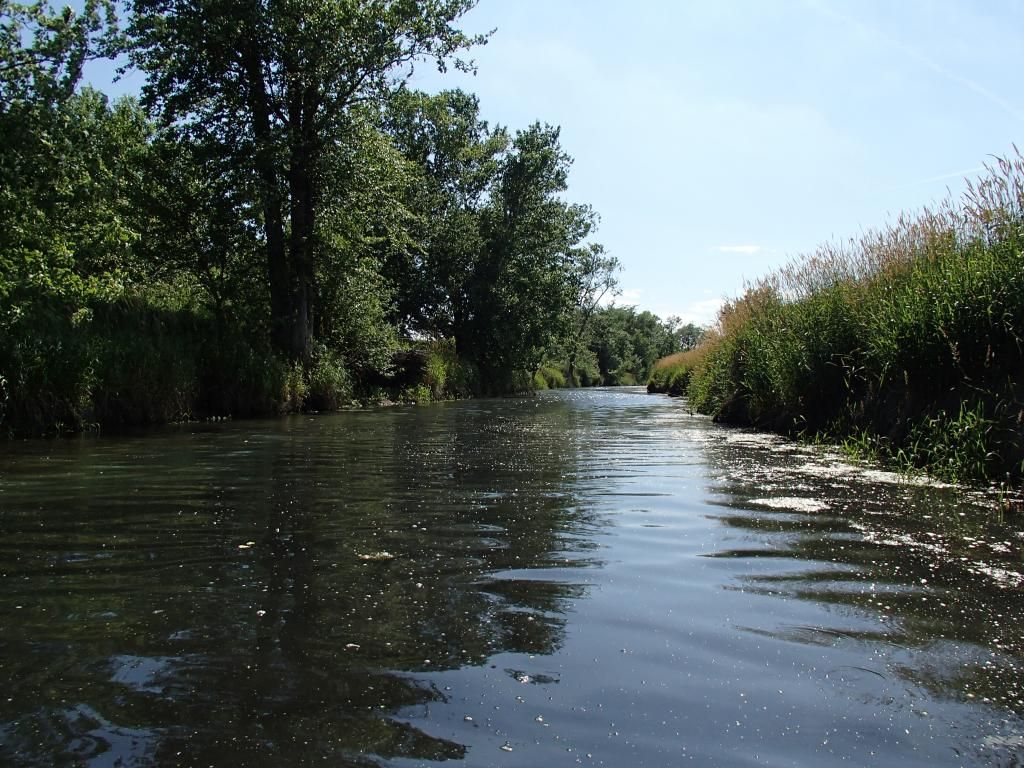
It may not be readily apparent from this photo because I'm standing waist deep in the ditch/stream, but once you climb up the banks, the landscape is corn and soy bean row crops as far as the eye can see. The crew I was training was tasked with collecting water samples, measuring characteristics of stream morphology and in-stream habitat, collecting macroinvertebrates, and electrofishing.
While I was working with some of the crew members measuring in-stream habitat, we came across a water snake (my guess is northern water snake (Nerodia sipedon)):
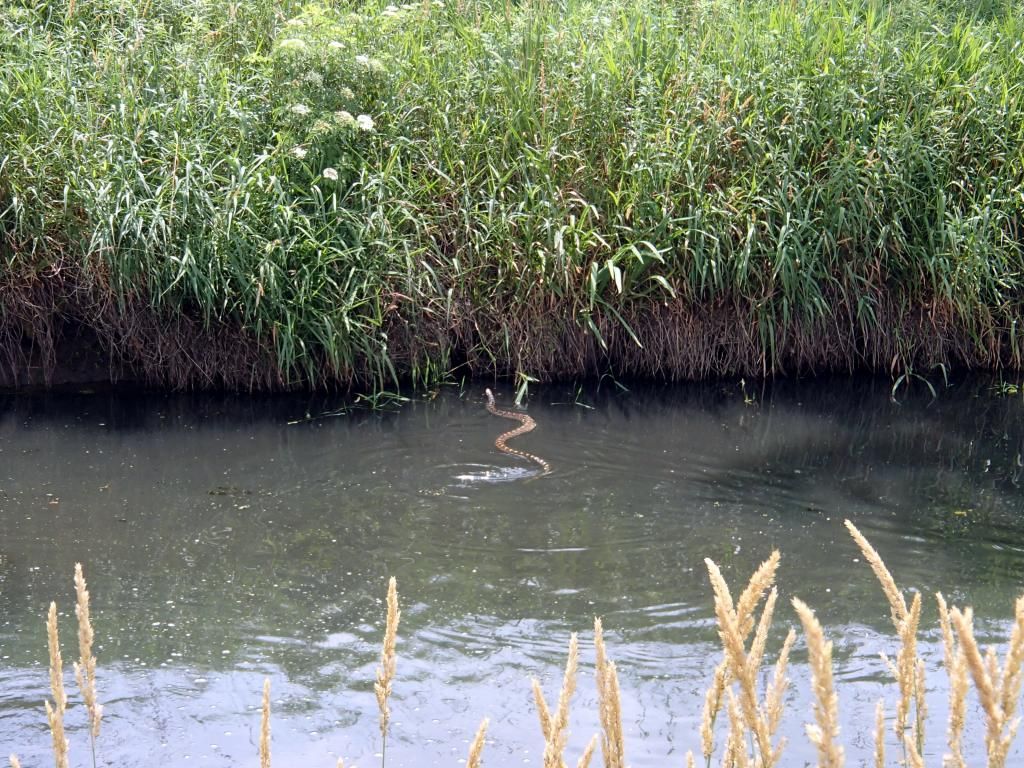
A variety of submerged vegetation was present within 5-6 feet along both banks. The remainder of the channel had a sand and silt substrate, and was between 2 and 4 feet deep. The electrofishing crew worked ahead (upstream) of the other crews, but occasionally I checked in on them and asked what they were catching. They responded, "mostly stonerollers, bluntnose minnow, and Gambusia." So, I didn't pay much attention to them until they were ready to start sorting and recording the catch. As I worked with the other crews, I couldn't help but notice a familiar looking fish skirting between the vegetation, just below the surface of the water. With a scoop of my dipnet I captured a starhead topminnow (Fundulus dispar):

The bright "star" on the head was helpful in identifying this species even as it swam just below the surface of the water. A few more scoops of the dipnet resulted in an adult male starhead topminnow:
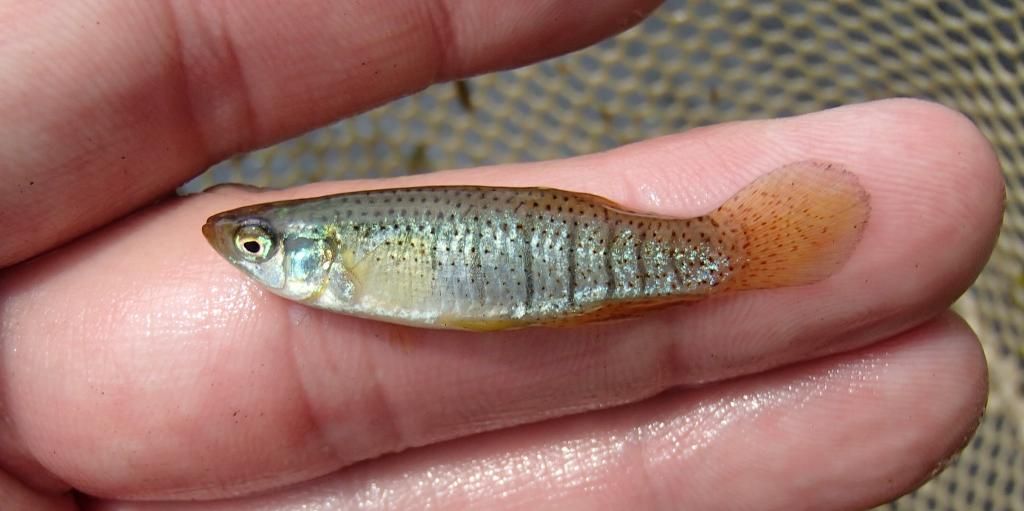
and an adult female starhead topminnow:
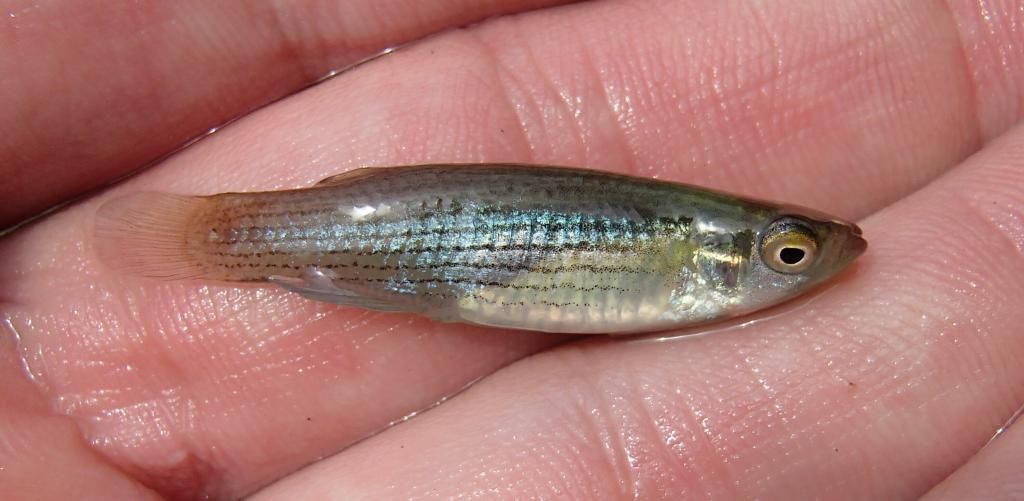
The obvious differences in the striping patterns helps to easily differentiate the two sexes. After capturing this species, I started to get excited about what else the electrofishing crew may have encountered in this stream, despite their initial report of, "stonerollers, bluntnose minnow, and Gambusia."
Once the crew concluded their electrofishing, I helped them sort their fish. It turns out their "Gambusia" were indeed starhead topminnow, their "stonerollers" were lake chubsucker (Erimyzon succetta):
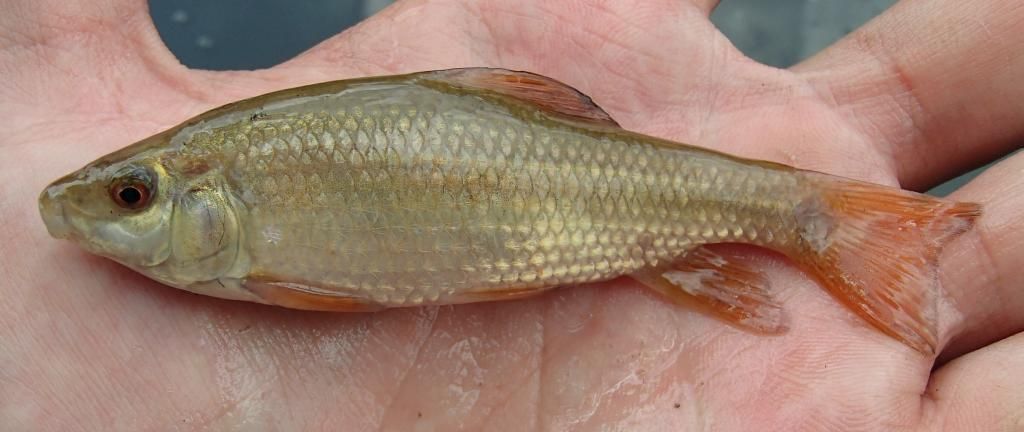
..and their "bluntnose minnows" were ironcolor shiner (Notropis chalybaeus), blacknose shiner (Notropis heterolepis), and there may have been a few blackchin shiner (Notropis heterodon) in the mix as well. I'm glad this was realized streamside instead of during the review process when the data would be harder to correct. Sorting fish at this site was very interesting, as we encountered many species I don't see very often. Below, I'll try to recall what we found at this site:
Bowfin (Amia calva) - two or three in the 15-20" range.
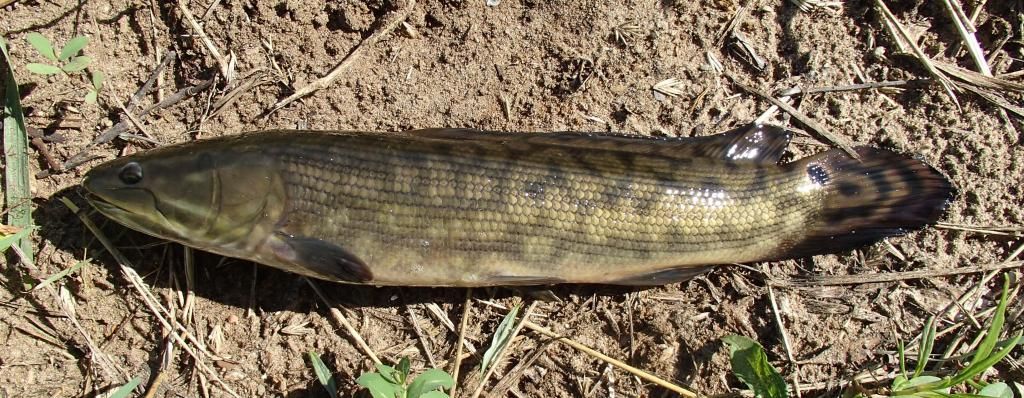
Golden shiner (Notemigonus crysoleucas)
Ironcolor shiner (Notropis chalybaeus) - the most common Notropis sp. at this site
Blacknose shiner (Notropis heterolepis)
Blackchin shiner (Notropis heterodon)
White sucker (Catostomus commersonii) - may have also caught spotted sucker (Minytrema melanops) - can't remember.
Lake chubsucker (Erimyzon succetta)
Bullhead (Ameriurus sp.) - can't remember which...may have been nebulosus
Tadpole madtom (Noturus gyrinus)
Pirate perch (Aphrododerus sayanus)
Northern pike (Esox lucius) - one was 24" or so in length
Grass pickerel (Esox americanus vermiculatus)
Starhead topminnow (Fundulus dispar)
Largemouth bass (Micropterus salmoides)
Pumpkinseed sunfish (Lepomis gibbosus)
Bluegill sunfish (Lepoims macrochirus)
Northern sunfish (Lepomis peltastes) - although I've seen peltastes in this drainage that look like megalotis hybrids.
Warmouth (Lepomis gulosus)
Johnny darter (Etheostoma nigrum) - I can't remember if we saw least darter (Etheostoma microperca) as well...the habitat seemed suitable.
I'm sure there were other common species I'm neglecting to mention. It was good to see these species are still holding on in this modified landscape. As I was departing, a heck of a storm came through. In the flat landscape of northwestern Indiana, there's not much out there to shelter you from an oncoming storm. So, I sat in my parked car as it rocked back-and-forth from the swirling winds. At one point the winds became so intense, my car started moving a bit and I contemplated getting out of my car and retreating to the safety of the ditch. Just when I was about to make that move, the winds lightened slightly, and I drove away. Later on back at the hotel, I turned on the local news and listened as the weatherman reported wind gusts of 90 mph and isolated tornadoes in the area. Luckily, no one was harmed.
The next morning I drove to northeastern Illinois to see my family and spend an afternoon chasing fish in a tributary to the Fox River (upper Illinois River drainage). More on that soon...
#67
 Guest_NateTessler13_*
Guest_NateTessler13_*
Posted 12 November 2014 - 03:44 PM
Just about every time I visit my hometown in the northwestern suburbs of Chicago, I make time to visit a stream with buddies. Growing up, I avoided fishing the streams. I thought of most of them as turbid, polluted waterways home to little more than carp and bullhead. It wasn't until I moved away that I learned to appreciate the biodiversity that still remains in these streams despite the modified condition of the habitat.
A recent rainfall event left most of the streams in the area flooded. The USGS gauge indicated water levels were falling in Blackberry Creek, a tributary to the Fox River, so that's where my friend and I headed. The Fox River begins near Milwaukee, WI and flows south into the Illinois River in the town of Ottawa, IL.
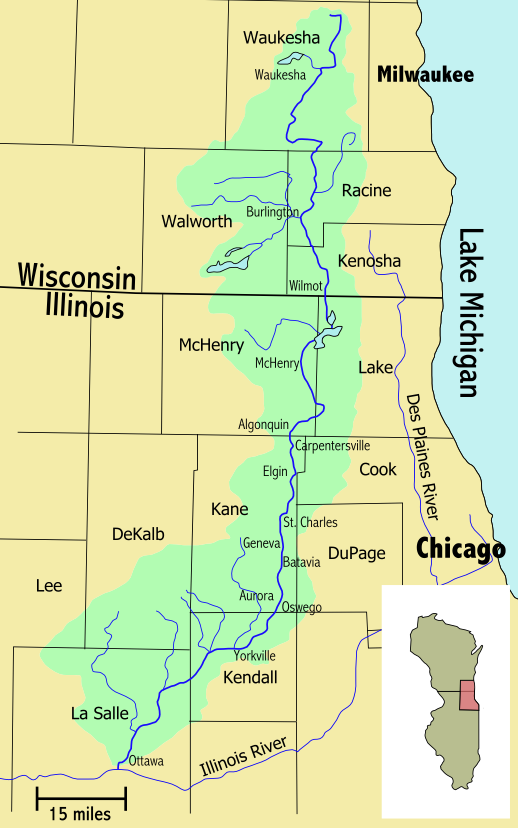
Blackberry Creek is located in the lower Fox River watershed. The creek begins near the town of Geneva and flows south into the town of Yorkville before entering the Fox River. Blackberry Creek is located on the edge of a metropolitan area, and the stream has suffered many impairments as a result of urbanization. The Fox River Ecosystem Partnership works with other conservation groups to preserve and enhance Blackberry Creek and the rest of the Fox River Watershed (http://www.foxrivere.../blackberry.htm). My friend and I visited a forest preserve along the bank of the creek, tucked between some shopping centers
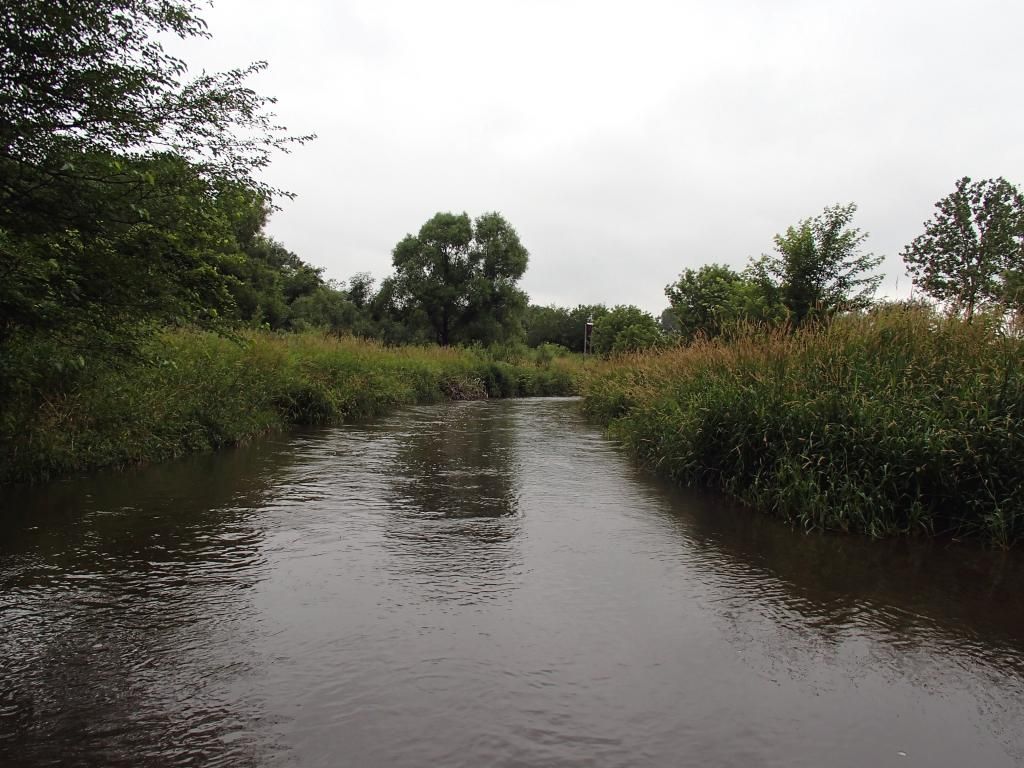
Many areas along the grass-lined banks were undercut, which provided ideal habitat for several sunfish species, including largemouth bass (Micropterus salmoides), smallmouth bass (Micropterus dolomieu), bluegill (Lepomis macrochirus), and green sunfish (Lepomis cyanellus).
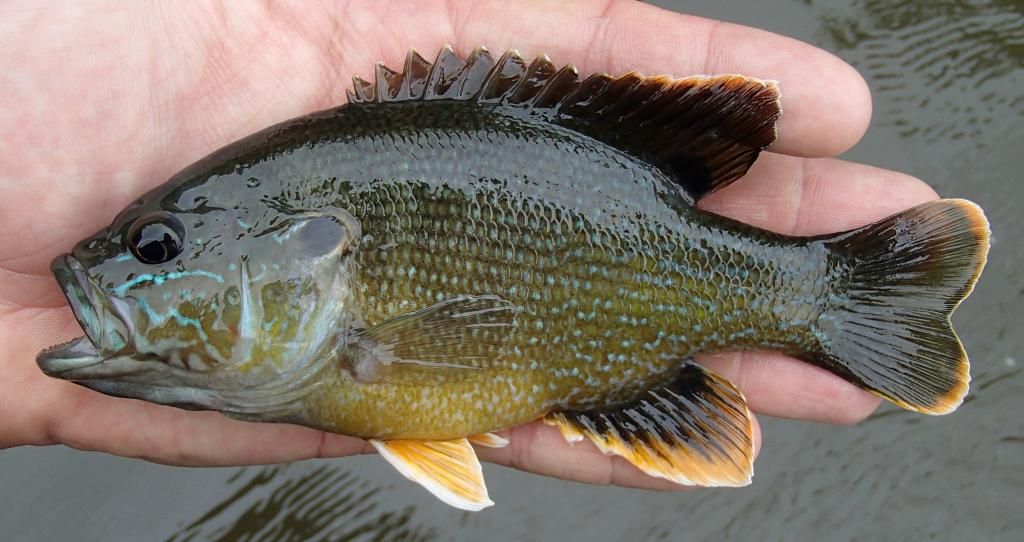
This under-appreciated sunfish can be quite an attractive catch and I've often been impressed at the ability of this species to adapt to a wide range of stream conditions.
While walking along the stream banks, I noticed some weathered shells from one of my favorite mussel species, rainbow (Villosa iris):
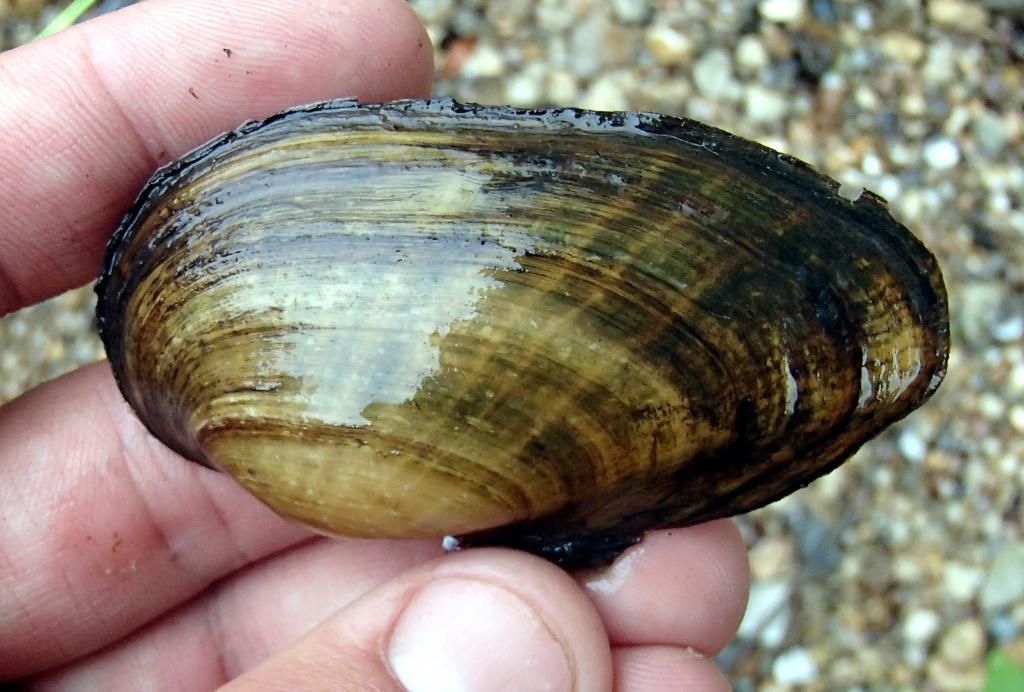
and Wabash pigtoe (Fusconaia flava):
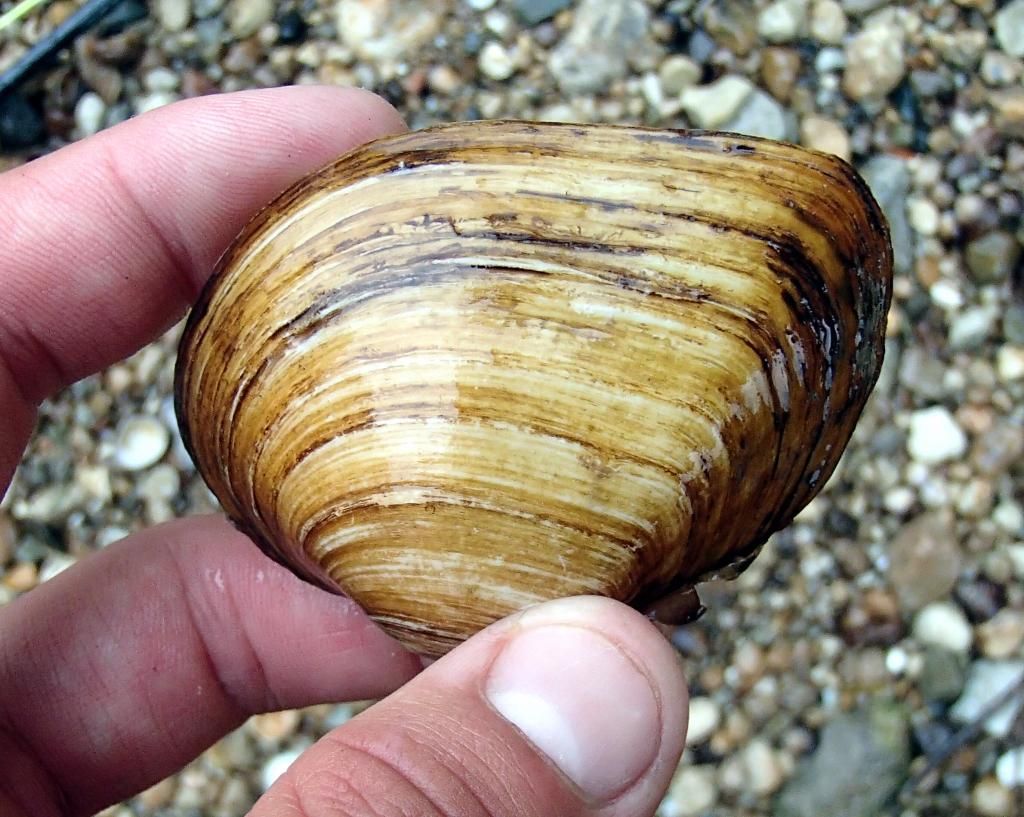
Although the rainbow is a widespread species, it is disappearing throughout the western part of its range and listed as endangered in the state of Illinois. Had the water been clearer, I would have been interested to see if live rainbows still exist in this stream.
After spending a few days in northeastern Illinois, I headed out to eastern New York for work in the southern portion of the Adirondack Mountains. More on that soon.
#68
 Guest_NateTessler13_*
Guest_NateTessler13_*
Posted 12 November 2014 - 05:06 PM
In the evenings, after workdays filled with environmental monitoring at a train derailment in Fonda, NY (along I-90 between Utica and Schenectady), a co-worked and I were able to take short trips north into the southern portion of the Adirondack Mountain Range. After a quick discussion with one of the guides at the local flyfishing shop, we stopped at a small mountain stream known as Hatch Brook:
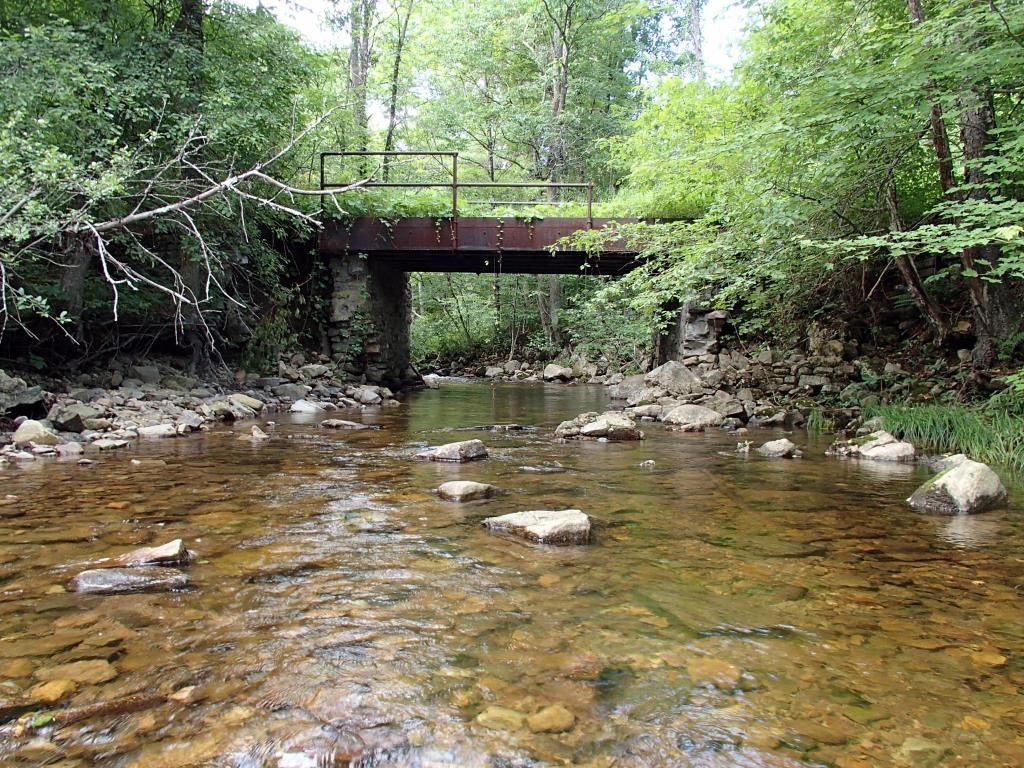
The waters of Hatch Brook were crystal clear and chilly to the touch. The substrate was covered in boulders and the only fish species found in the pools was the brook trout (Salvelinus fontinalis):
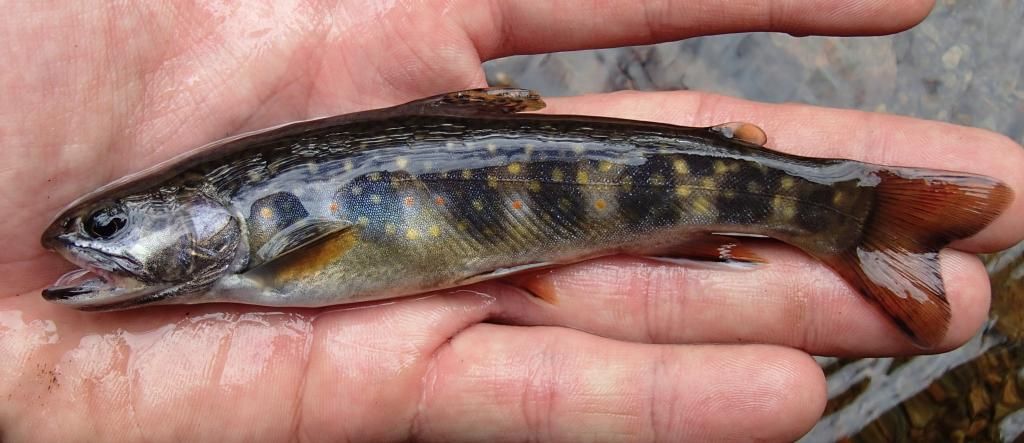
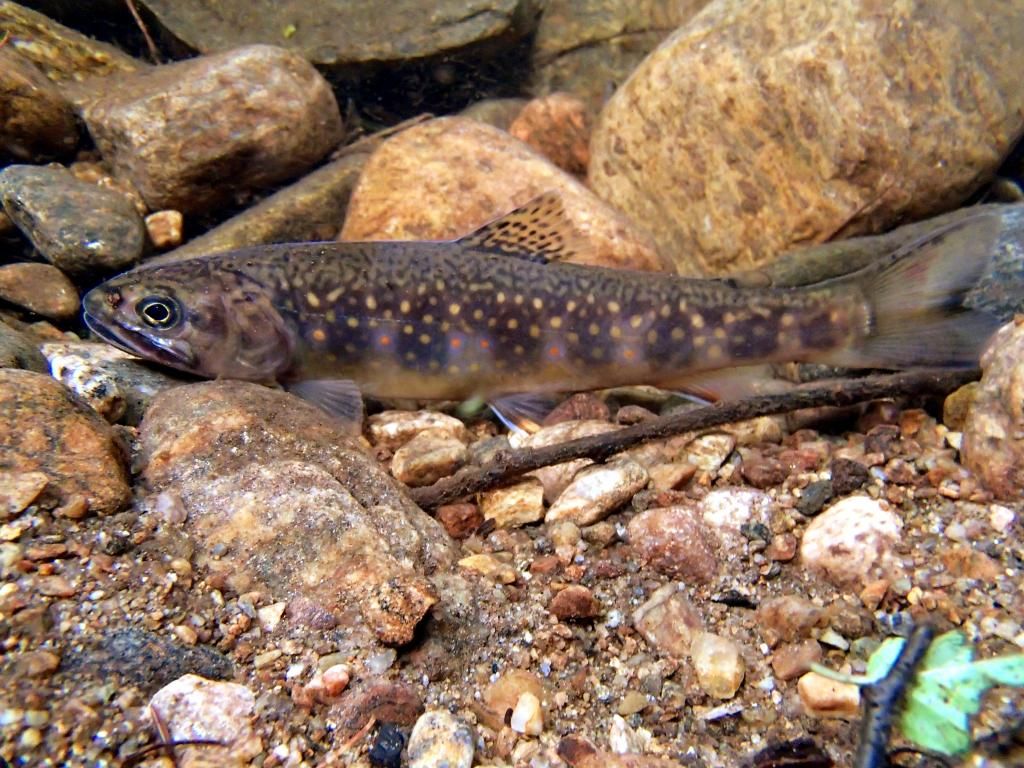
These small, beautiful trout could be fooled by small dry flies skated across the surface. Since the water was so clear, a good deal of stealth was required. While keeping a low profile, I was able to catch a dozen or so trout while enjoying the peaceful settings.
During my few days in the area, my co-worker and I explored a few other streams in the area, but none of the others provided quite the same "mountain stream" experience and peaceful settings. In fact, the stream adjacent to the west was anything but peaceful when a large beaver startled me near dusk by slapping its tail forcefully on the water...!!! Message received - I backed off and made my way back to the car.
After wrapping things up at the train derailment, I headed back to northeastern Ohio and did some snorkeling.
#69
 Guest_NateTessler13_*
Guest_NateTessler13_*
Posted 12 November 2014 - 06:21 PM
In the middle of summer I decided to give my fly rod and electrofishing backpack a rest as I jumped in the East Branch Chagrin River with my friend Andrew Zimmerman (whom some of you may have met at the '14 NANFA Convention). The East Branch Chagrin River (tributary to the Chagrin River in the Lake Erie drainage) is designated by the Ohio Department of Natural Resources (ODNR) as a State Scenic River. The ODNR, along with the Chagrin Watershed Partners and Chagrin River Land Conservancy, have worked together with various other conservationist groups to protect, preserve, and enhance the integrity of the watershed. The stream and its tributaries are known to have exceptional aquatic habitat. The habitat in this watershed is home to rare and interesting fishes in Ohio, including longnose dace (Rhinichthys cataractae), redside dace (Clinostomus elongatus), southern redbelly dace (Chrosomus erythrogaster), American brook lamprey (Lethenteron appendix), and a genetically distinct population of brook trout (Salvelinus fontinalis).
On a sunny day in mid-July, Andrew and I snorkeled around the first three or four riffles we encountered in the lower end of the East Branch Chagrin River:
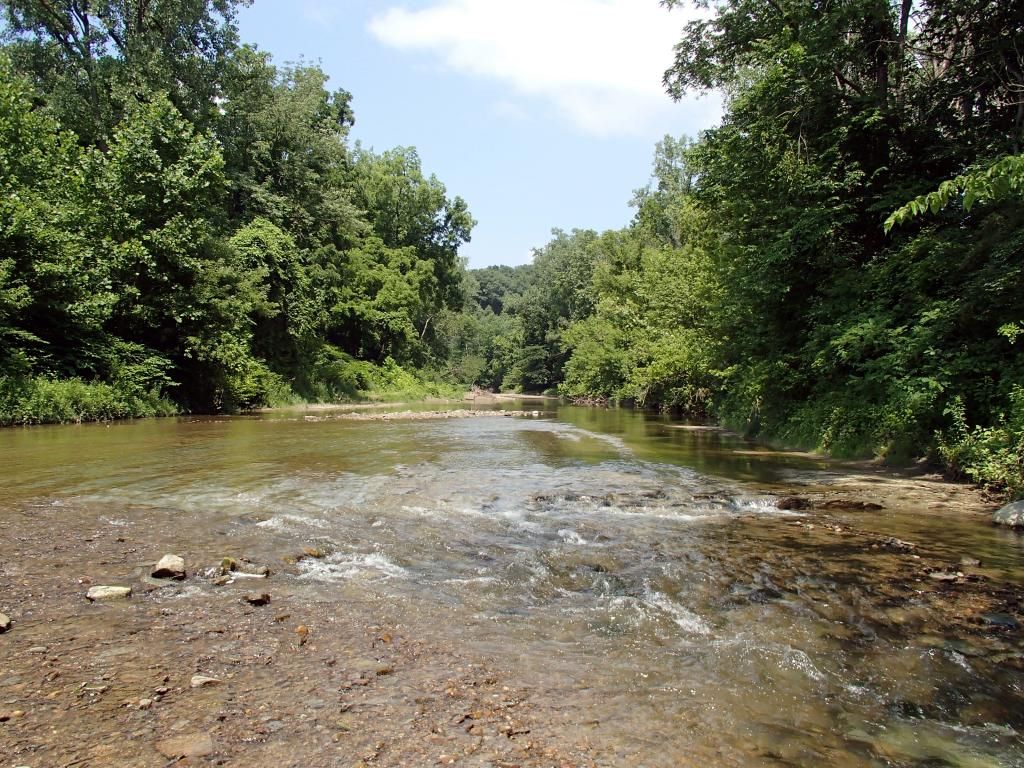
The flat shale cobble and sandstone in the riffles provided home for a diverse assemblage of darters, shiners, and suckers. Some of the larger pieces of shale provided excellent hiding spots for numerous stonecat (Noturus flavus):
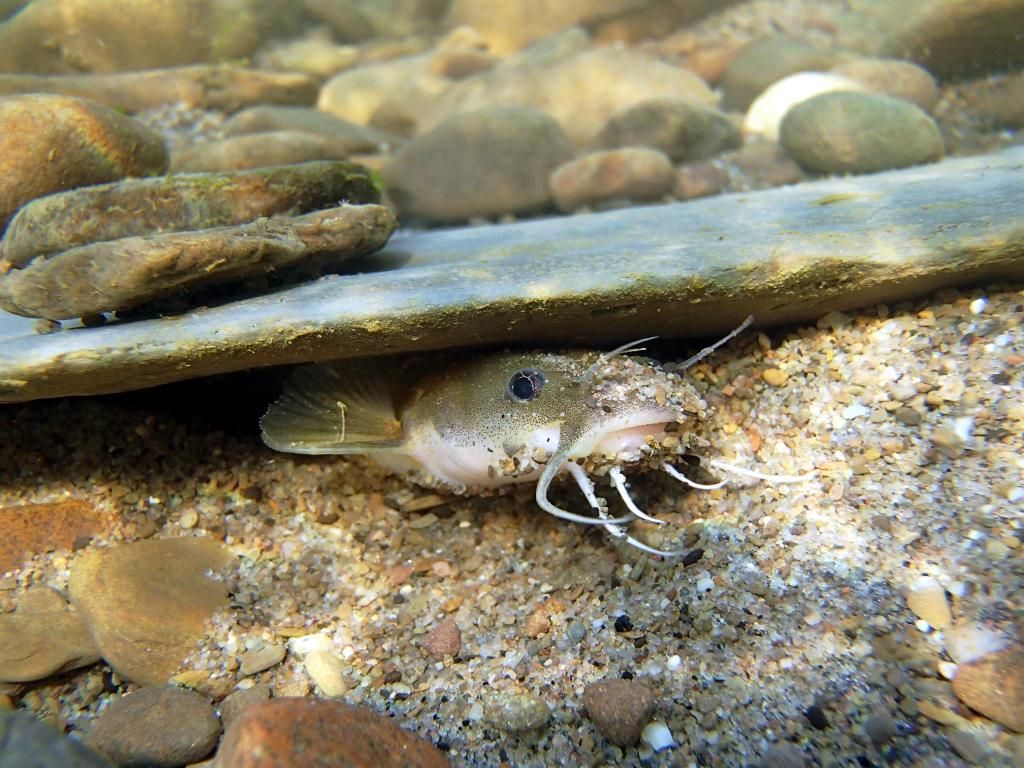
Rainbow darters (Etheostoma caeruleum) were abundant in the riffles, runs, and pools.
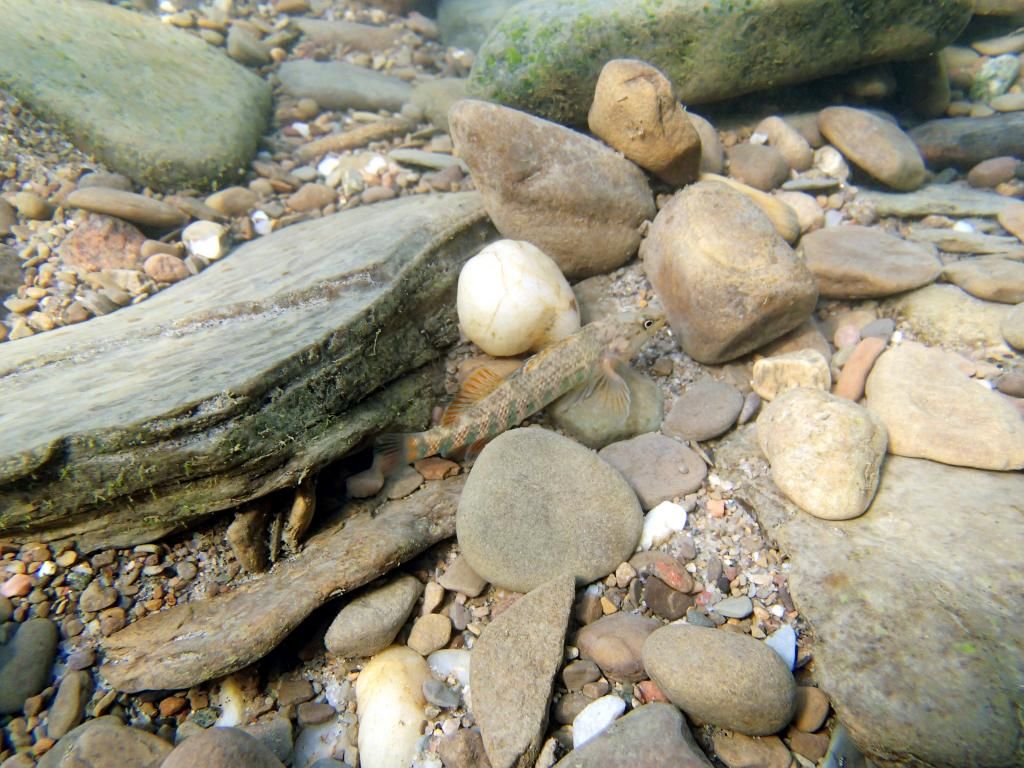
Andrew prepared a short video showcasing some of what he and I saw during our snorkel trip:
http://youtu.be/pqo8Avmk8Us
Early in the video, you can see numerous rainbow darters hopping around the clean substrate.
Around the 1:15 portion of the video, you'll notice a longnose dace in a swift moving riffle. This may be the furthest downstream this species have been observed in this watershed.
Around the 2:00 mark, we swam through one of the pools and encountered bigeye chub (Hybopsis amblops), silverjaw minnow (Notropis buccatus), sand shiner (Notropis stramineus), rosyface shiner (Notropis rubellus), central stoneroller (Campostoma anomalum), bluntnose minnow (Pimephales notatus), creek chub (Semotilus atromaculatus), striped shiner (Luxilus chrysocephalus), spotfin shiner (Cyprinella spiloptera), greenside darter (Etheostoma blennioides), and several other species.
Later in the video, we found some deeper pools that were home to central stoneroller, white sucker (Catostomus commersonii), golden redhorse (Moxostoma erythrurum), and smallmouth bass (Micropterus dolomieu).
This stream provided an enjoyable escape from the hot summer sun and the shaded stream corridor and regular supply of groundwater helps keep this stream cool year around for the fishes as well. If you're looking for a place to stick your head underwater in northeastern Ohio, this stream is one of your better options.
From here, Andrew and I traveled east into Pennsylvania to swim with eastern hellbender (Cryptobranchus alleganiensis alleganiensis):
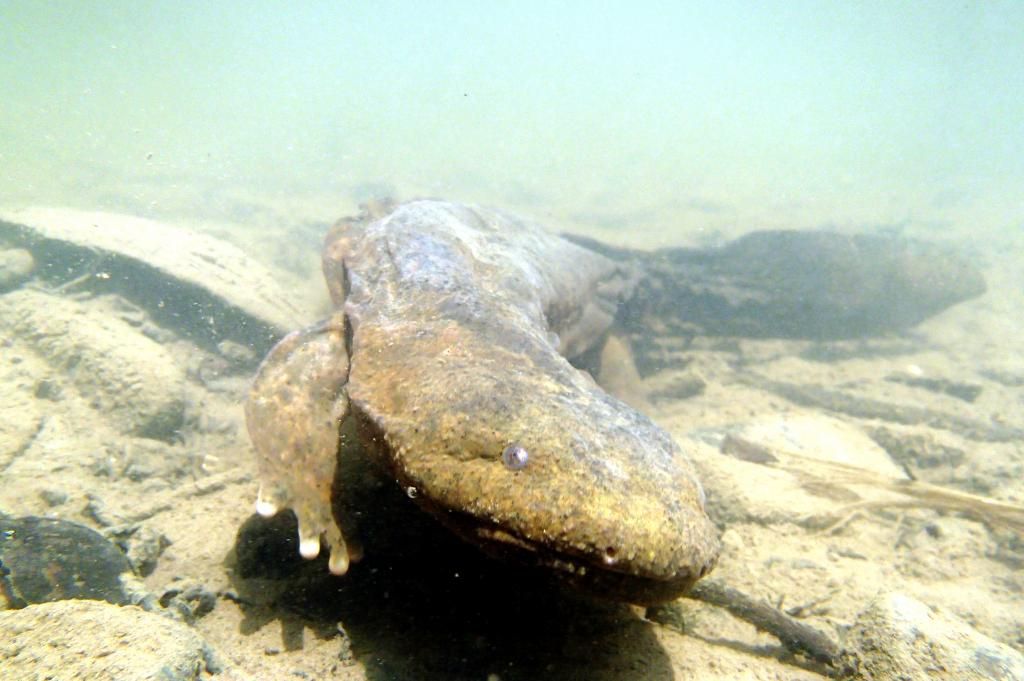
More on that soon!
Reply to this topic
1 user(s) are reading this topic
0 members, 1 guests, 0 anonymous users








